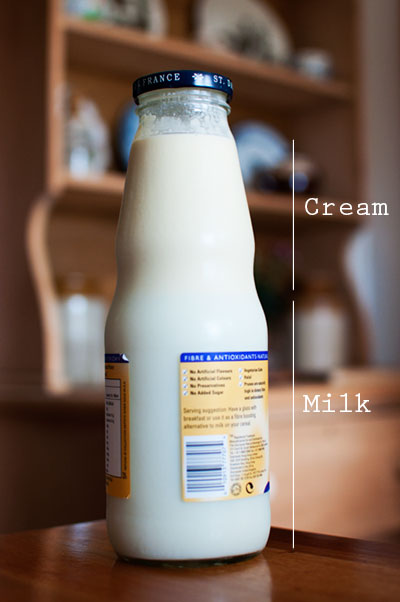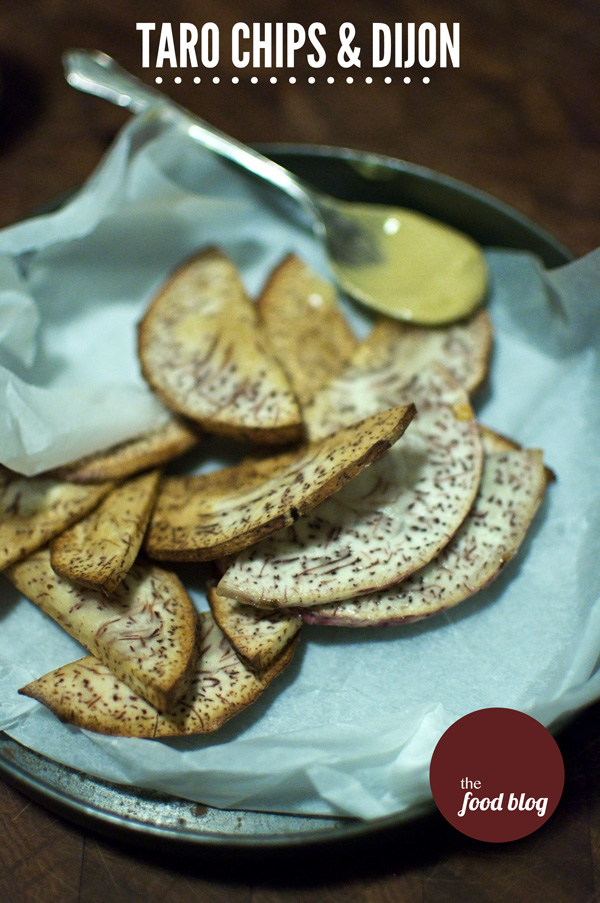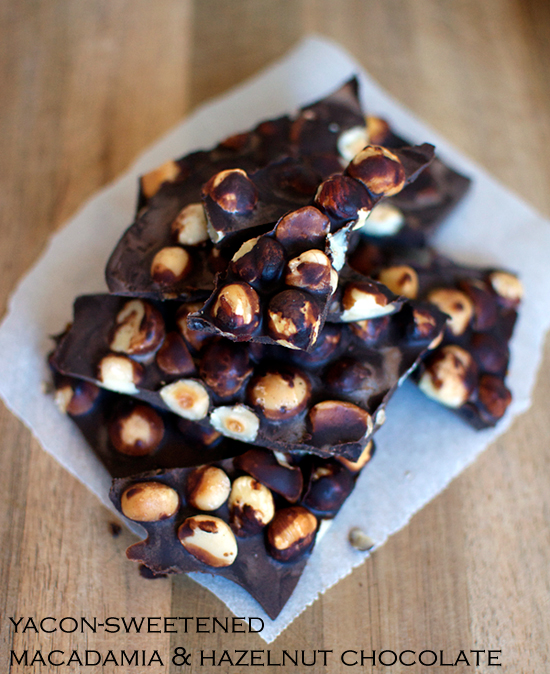
I get these strange thoughts sometimes. I worry about getting stuck in a time warp, ending up in the days of King Richard the Lion Heart, being faced with the need for penicillin, and then kicking myself for never taking the time to learn how to make my own. There he is, the noble king, lying injured, susceptible to infection. His life is in my hands, but though I am aware of the biotechnology that could save his weakening body, I lack the manufacturing knowhow. Cruel fate, damn you!
Do you get stupid thoughts like these? Probably not, and why should you, but it’s certainly why I’ve always felt like I needed to learn how to make things from scratch. Sufficiency. That’s a state I’d love to achieve. Today, in my quest for this sufficiency, I taught myself how to make my own butter. Feeling pretty good about myself!

It’s been almost a year to the day since we moved to Flemington, and this week we moved out. In preparation for our upcoming trip to Lebanon, we decided to bid Flemington adieu and spend a month with Elaine’s parents in Picton. I love Picton. The green country side, more sunshine than you could ever wish for, acres of space, a star-studded night’s sky and real, raw milk.

The milk comes from cows that belong to a family friend. My mother in law, Pam, brought me 2 liters of super fresh, non-homogenised milk and that got me super excited, as you could imagine. Raw milk is a rare treat in Australia. You can’t get it at the supermarket. I once saw it in a health food shop and it was advertised as a product to be used for a “beauty bath”. That’s because raw milk does not get sold for food in Australia. This one is absolutely beautiful. Look closely and you can see the cream line in the bottle. The milk is super fatty, almost one third cream. I love that! The more fat the better (I’m a low carber these days, so fat is my friend). I used some cream in my morning coffee, to make an omelette, and to make butter. Really great butter.

Making butter turns out to be easy. Put your cream in a jar. Shake the heck out of it. Ten minutes or so, the butter will separate from the butter milk. Strain it, squeeze the excess liquid out, salt the butter and eat it! It doesn’t last long I hear, but it shouldn’t have to last long, right?



20 comments
You can use double cream as well. Put it in a food processor, 10 seconds later, butter!
I think of how big a hero I would be for showing up with toothbrushes, toothpaste, floss and mouth was in 16th century royal courts.
“Churn butter churn,
Churn butter churn!
Fouad’s waiting at the gate,
Waiting for his buttercake!
Churn butter churn,
Churn butter churn!”
I used to work at a pioneer village here in Canada, and we made a lot of butter – in wooden or ceramic dash churns, in a rocker churn…so I know a bit about butter. And the part of the process that you’re missing is washing it. You need to wash all of the buttermilk out by chopping it up, pressing it, etc. with fresh water until the liquid coming out of it is no longer cloudy. This will increase your butter’s shelf-life, since the buttermilk that’s in it will go rancid. Now, since you’re not making it in large quantities and probably go through it before it’s a problem, you don’t really *need* to do it, but if you’re going to much more than you appear to have done, I’d wash it (and salt it, obviously), if I were you.
Looks beautiful though, I must say! I’m jealous of your raw milk. I bought some cream at the store the other to make butter just as you’ve done, in a jar, but I ended up turning it into no-churn chocolate-spice ice cream!
Ah, best things in life can be free and so simple!
My father’s best friend ran a property in Barrington Tops. The first time I visited the farm, milk straight from the source was the on the breakfast table. As a young city slicker I wouldn’t at first touch it due to how yellow it was. I totally laugh at that first experience now and wish that I could get my hands on that incredibly fresh milk now.
yum
I’m visiting my parents in Lebanon this week and when I first read this blog post I said Bingo! My parents live on a small farm in north lebanon and we do have a cow. So yesterday I got a couple of liters of fresh cow milk and tried to make butter with it but it didn’t work unfortunately. Do you know if we need to let the milk sit in the bottle for a couple of days (so it separates) prior to doing the butter? Also how does one practically empty the top third of the bottle (containing the butter) in a separate container? And finally when you do the shaking, do you do it with the milk at room temperature or cold or it doesn’t matter?
Thanks and I look forward to re-trying this 🙂
Thanks everyone for your comments.
Edgard, here are your answers:
– You must separate the cream from the milk. You can’t use a mixture. It needs to be just cream (a tiny amount of milk is ok)
– I hear that the older the cream (as long as it’s still good) the easier it becomes butter (haven’t tested this theory).
– I also understand that if you leave your cream out at room temperature, it becomes more sour (due to natural cultures). This makes the butter more of a tangy, European style butter with loads of complex flavours
– It’s easy enough to ladle the cream off the top if the container is wide enough. The cream will rise if the milk is left undisturbed for a few hours or a day.
– I don’t think it matters with the temperature. Another way, instead of shaking, is whipping the cream using a mixer (much less hard work). Jorge has suggested a quick whizz in a food processor does the trick. I want to try that approach.
Thanks Fouad.
One last question, was the milk that you received pasteurized or just pure raw out of the cow?
It was raw milk. If you pasturise the milk, you won’t be able to culture the cream. You’d have to make do with normal butter (which is still good, but won’t be tangy, Euro style).
I remember making butter at home. My grandfather had a dairy and every Saturday we’d make the trek to grab the best milk.
The butter was always different everytime we made it!
I don’t think I’ve seen a blog that had this separation process of milk and butter. This is interestingly fun to do. 🙂 Make them muscles work with the heck of a shaking. LOL!
I finally got it 🙂 The problem I was having initially was that the raw milk wasn’t rested enough to have the natural separation of milk and cream. I let it rest for 2-3 days in the fridge and then slowly carved the cream from the top of the milk jars.. and being lazy, I threw the milk in the food processor/blender d of shaking it in a jar instead and it got me the delicious butter I was looking for. It’s amazing how the butter forms all of a sudden and so quick after a few minutes of blending…and this morning I fried an egg with the butter and it was so delicious!! thank you Fouad great blog.
Wow, it’s awesome that you could get your hands on some raw milk. That’s the best kind of milk we humans could ever have, provided the cow it’s from is grass-fed and healthy overall. It’s funny: here in Colombia the selling of raw milk was banned thanks to the joined efforts of milk companies here… sad, huh?
Thanks for sharing! 😀
Just a note in case people are unaware …. although illegal to sell raw milk in Australia, you can still buy it … but it is sold as “Bath Milk”. You can access this via farmers markets or online at different stores, some do home delivery. Usually goes for $8-9 for 2 liters. so anyone is Metro or country area can buy pure raw milk to drink.
If you want to source raw milk legally in Australia you need to own a cow. That’s not practical for most of us. You can, however, buy shares in a cow at some dairies, and then you get a share of the milk. 🙂
I recently read an article about an organic store called Rawesome Foods being raided for selling raw dairy products in California. I think the debate about raw vs pasturised milk is interesting. Now I’m really eager to try raw milk.
OK. I have my cow – and therefore my raw milk. Where do I get a milk seperator to speed this all up? Any clues?
ebay I think has them…
Oh this is interesting! I might try this recipe at home. Thanks the food blog!